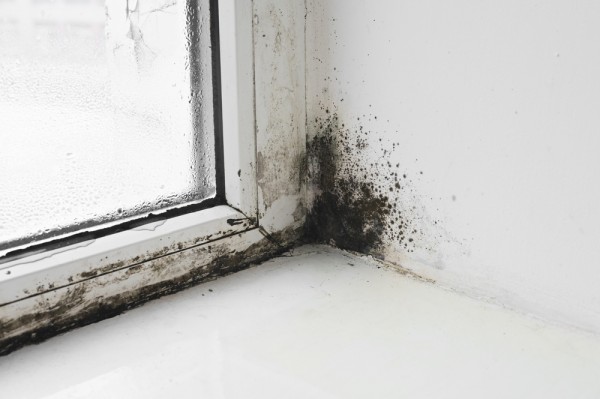
Whether you’re a homeowner, a tenant or a landlord, damp, mould and mildew can be a scourge on your property. Not only do damp, mould and mildew look unsightly and cause damage to the fabric of any building, they can also be extremely dangerous for anyone living there.
One of the major causes of damp, mould and mildew is condensation, which occurs when warm air collides with a cold surface.
If you think you have damp and mould in your property, don’t put off dealing with it – it spreads like wildfire.
Mildew is a close relative of mould but can be distinguished from its counterpart by colour: mould appears in various shades of black, blue, green or red, whereas mildew is white. Both thrive when there is excessive moisture in the air.
Here are some steps that can be taken to prevent them occurring in the home (landlords who do not live in their properties may wish to pass them on to tenants).
Early signs
If windows have excessive moisture on them, if there are damp patches on the wallpaper or it’s peeling, then those are signs that there may be a problem with condensation.
Quick tips
Changing some aspects of your routine will help – here are some things you can do which will make your home more manageable. Each morning, it’s a great idea to take your bed covers, whether that’s a sheet or duvet, off the top of the mattress. That will allow the moisture to disperse, as will opening the curtains and windows to let fresh air circulate for a short period. Another good idea is to open the blinds and curtains in other rooms, which will stop the moisture around windows becoming trapped.
Keep the extractor fan going when you’re either cooking or bathing. It’s also important to maintain your fans, cleaning them with a damp cloth and removing fluff, which could reduce their efficiency. We also recommend removing the outer covering of your kitchen extractor fan and giving it a clean in some soapy water before drying it thoroughly.
Open doors
If you’re keen to air-dry your clothes, we also recommend using a clothes horse, rather than putting your wet clothes on a radiator. Putting the clothes horse near to an open window or extractor fan is recommended. And whenever you can, wipe down your window frames and walls with a dry cloth to get rid of any unnecessary moisture. Open doors and windows regularly to thoroughly ventilate the property. The circulation of dry air is really important.
Dehumidifier
If you want to reduce condensation in your house, these can be a good idea. They suck the moisture out of air molecules and blow back dry air - adding warmth in the process. They won’t solve a damp problem, but they will reduce the amount of moisture in the air, which causes the condensation.
Try to set your heating so that your home is at a minimum of 18 degrees in winter months and have your heating system serviced regularly so you can be sure of its reliability and efficiency – especially during the winter months.
Finally, if the problems of damp and mould persist, please seek professional help – not only can damp and mould create living conditions that are bad for your health, they can cause serious damage to the building, too.
For more information on how we can assist you on your letting journey, please contact one of our branches in Essex, London or Hertfordshire today. We also offer a free and instant online valuation to give you an idea of how much your home could be worth on the current market.
